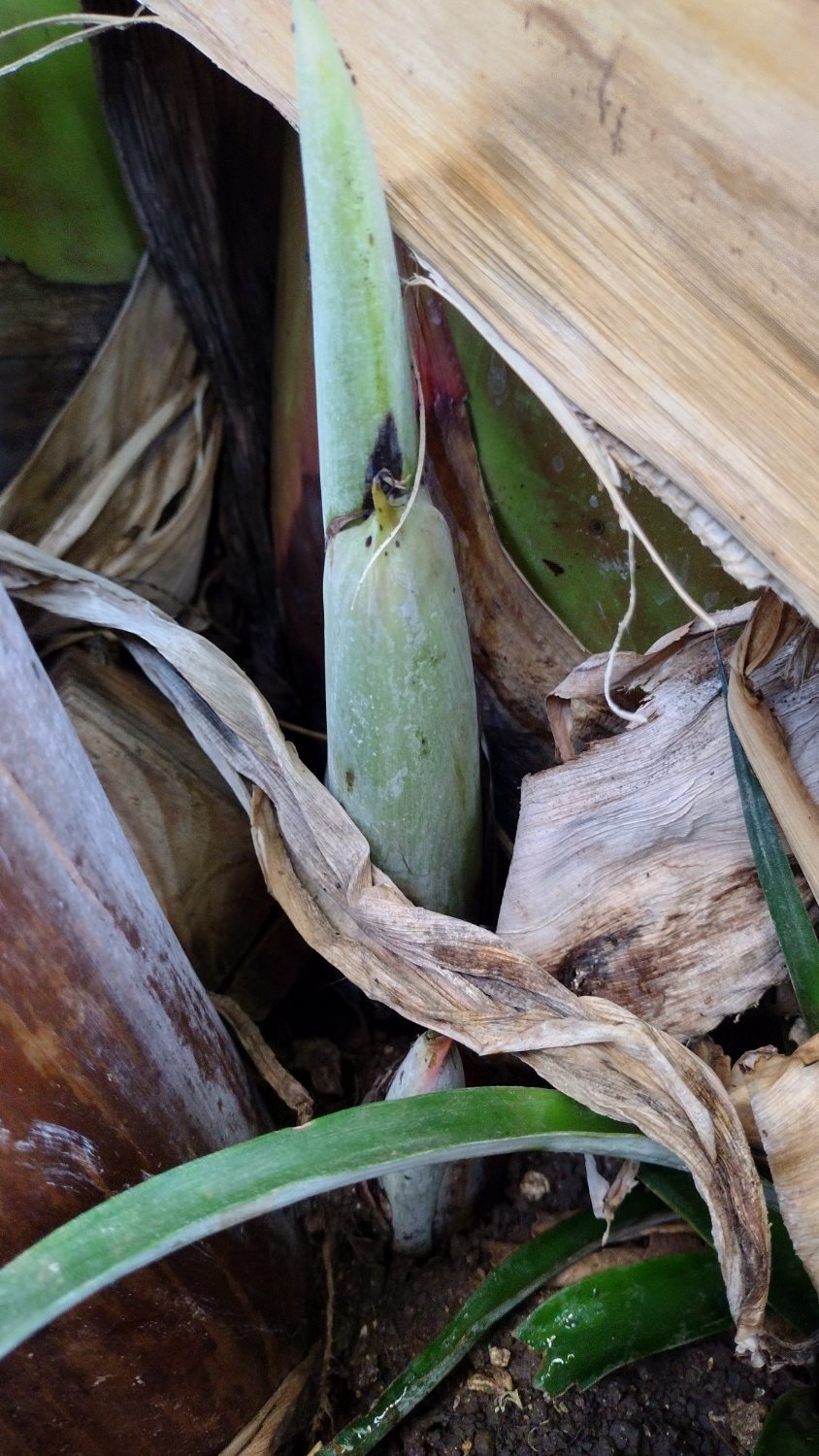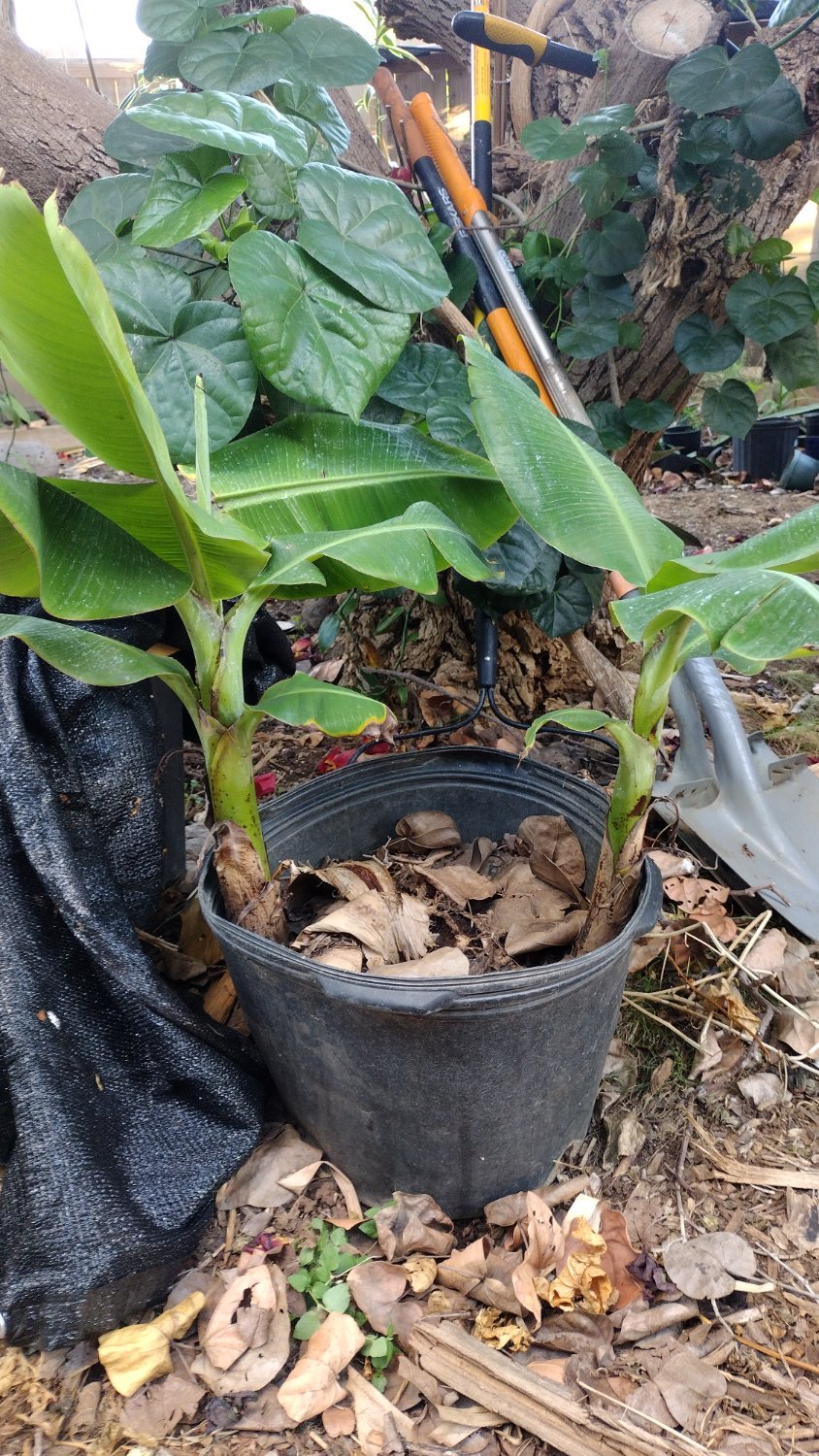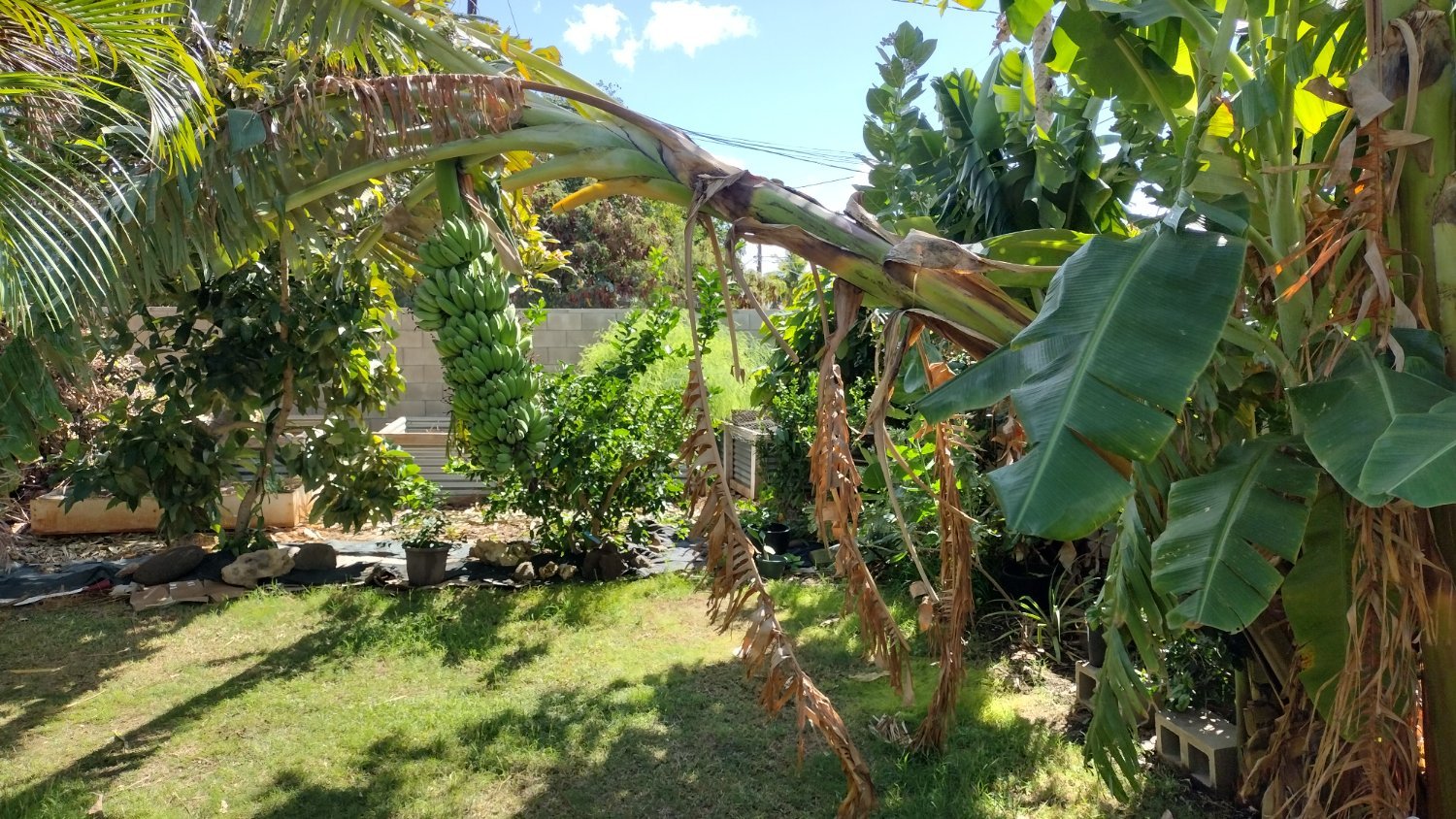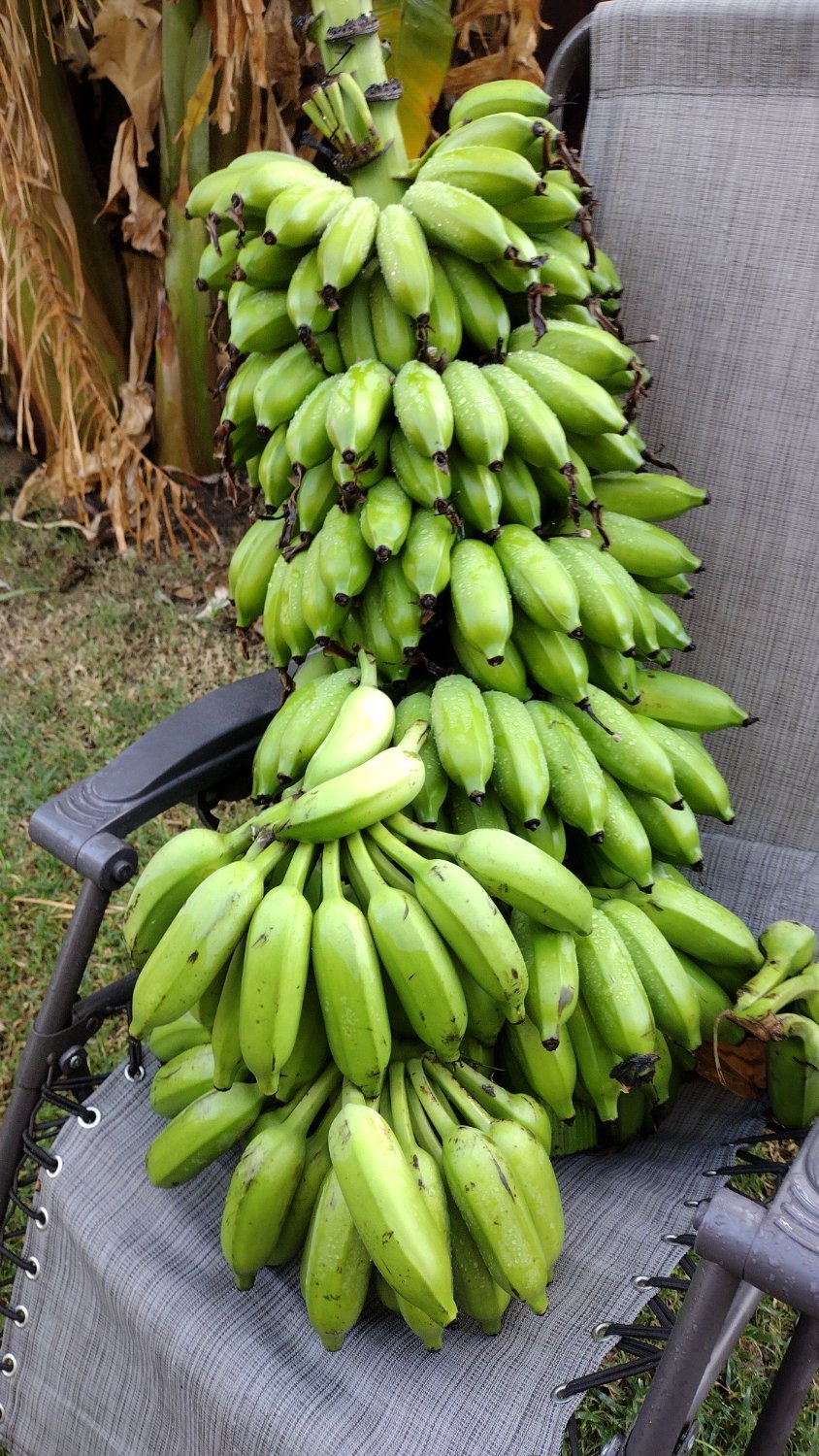Its that time of year when banana man brings da presents.
🌕🌕🌕🌕🌕🌕🌕🌕🌕
🌕🌕🌕🌕🌕🎩🌕🌕🌕
🌕🌕🌕🌕🌘🌑🌒🌕🌕
🌕🌕🌕🌘🌑🌑🌑🌓🌕
🌕🌕🌖🌑👁🌑👁🌓🌕
🌕🌕🌗🌑🌑👄🌑🌔🌕
🌕🌕🌘🌑🌑🌑🌒🌕🌕
🌕🌕🌘🌑🎁🌑🌒🌕🌕
🌕🌕🌘🌑🌑🌑🌓🌕🌕
🌕🌕🌘🌑🌑🌑🌔🌕🌕
🌕🌕🌘🌔🌘🌑🌕🌕🌕
🌕🌖🌒🌕🌗🌒🌕🌕🌕
🌕🌗🌓🌕🌗🌓🌕🌕🌕
🌕🌘🌔🌕🌗🌓🌕🌕🌕
🌕👠🌕🌕🌕👠🌕🌕🌕
Apple banana coming in. I've had this patch planted maybe five years. It's becoming a bit of a problem and I'm gonna have to move it because it's taking over and crowding out some native plants but I thought garden and farm nerds might want to see how non industrial bananas are grown.
You startem out as keiki:

which grow at the base of a large corm, or pseudo bulb. I usually dig them out with a shovel and then throw them in a pot like this for to transplant. I fertilize with an organic heavy phosphorus mix just to get them going.

[note: this picture isn't apple banana, but Tahitian blue banana.]
At that point, with enough water and any where from 30-100% sunlight, they establish themselves. It takes almost 18 months from keiki to mature fruiting plant, and usually your first bananas are so so in quality. However, the new keiki will be coming up (about 12 months after planting), and if you irrigate or have enough rainfall, once established, you press up up down down LRLR start select, and that unlocks the infinite banana cheat code. Bananas, once established, are insanely productive, and you can manage the sugar to fiber ratio by how early you harvest. Boiled banana a favorite at our house and we do that with very immature bananas.

When a banana plant is ready to give it starts to lean. Bananas are all effectively nodal clones from the base of the corm, and can be pretty destructive. We had some come down on a fence and with the stem, which is basically all water, and the bananas, it's at least a couple kg suspended pretty high in the air. You can also tell they ripe when they yellow up and start to fan out like a open palm 🫴. The longer you wait the better the flavor is, but also more likely to fall uncontrollably. Depending on the variety can do real damage to cars or whatever underneath.
Most of thes going to go to a food bank and we grow enough fruit to keep an ice box pretty much full all year. Anything extra goes to an auntie who that's her thang and she'll make sure they get to the right people.

Nice write up.
Loads of banana plants here too, but they need a bit of climatic protection around these parts (high walls against wind), so not many people have them in their gardens.
Where I was in the Caribbean they were doing some experimentations with dwarf banana plants in commercial exploitations to tackle this problem of wind.
I think it was a project sponsored by Taiwan, I'm curious to see of this is a solution that will develop.